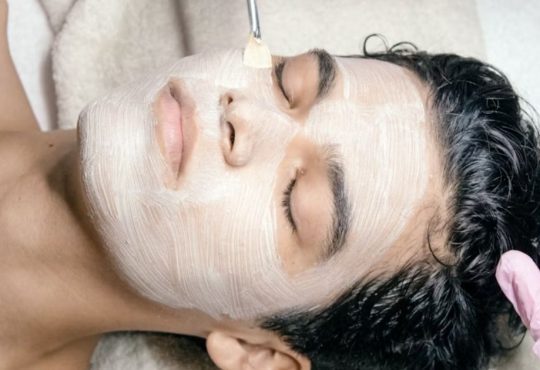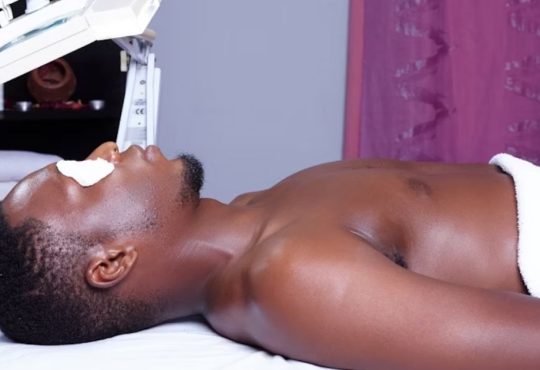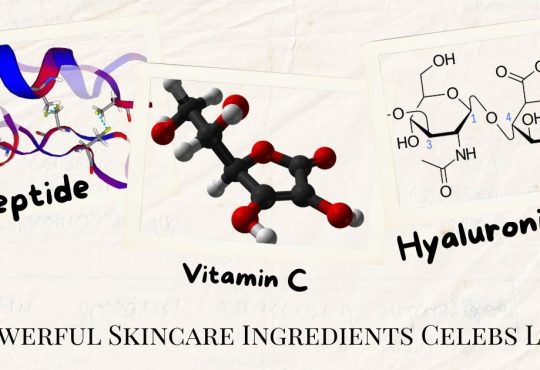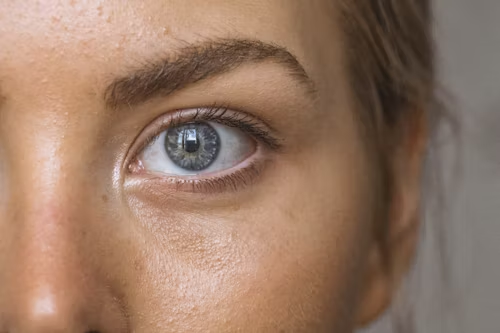
Encountering an unexpected pimple on a significant day can be exasperating for anyone. The temptation to combat it might be compelling, yet as dermatologists and children’s literature have emphasized for generations, resorting to aggression is never the solution. While quick fixes may not be readily available, numerous methods exist to expedite a pimple’s departure. We’ve curated a collection of actions you can take to improve your skin condition—and, just as crucially, a list of practices to avoid in our pimple-prone skin tips.
Pimple-Prone Skin Tips: 12 Epic Methods to Banish Pimples!
If you frequently experience pimples, consider scheduling an appointment with a dermatologist. They can devise a personalized regimen to maintain clear skin. However, there are effective home remedies to soothe sporadic breakouts.
Apply a Small Amount of Benzoyl Peroxide
For a rapid remedy to an unwelcome pimple, dermatologist Shilpi Khetarpal, MD, recommends the application of a small amount of benzoyl peroxide, which is readily available in various forms—cream, gel, or patches—accessible at most drugstores. Benzoyl peroxide is known for its efficacy in combatting acne by targeting the bacteria responsible for clogging pores and triggering inflammation. With concentrations ranging from 2.5% to 10%, individuals can choose a formulation that aligns with their skin’s needs and sensitivities.
Dr. Khetarpal underscores the affordability and effectiveness of benzoyl peroxide, emphasizing its longstanding presence in the skincare market. However, she offers caution regarding prolonged and repeated application to the same area, which may lead to dryness or irritation. Therefore, individuals with sensitive skin are encouraged to opt for products containing lower concentrations of benzoyl peroxide to minimize the risk of adverse reactions while reaping the benefits of this potent acne-fighting ingredient.
Use Products infused with Salicylic Acid
Enhance your skincare regimen by integrating products enriched with salicylic acid, a beta-hydroxy acid renowned for its dual action in unclogging pores and gently exfoliating the skin. This powerful ingredient is a staple in various acne-fighting formulations, from cleansers and lotions to toners, serums, and even pimple patches, by leveraging the exfoliating properties of salicylic acid, penetrating deeply into the pores to dissolve any surplus oil and debris contributing to acne formation while simultaneously penetrating deeply into the pores to dissolve surplus oil and impurities. Its versatility and efficacy make salicylic acid indispensable to any skincare arsenal.
Whether grappling with the occasional whitehead or battling a relentless outbreak, incorporating salicylic acid into your daily skincare routine can yield significant benefits for your skin. By embracing products enriched with this potent ingredient, you target existing blemishes and proactively prevent future breakouts, resulting in a more precise, smoother, and radiant complexion over time. With salicylic acid as a steadfast ally in your skincare journey, you can confidently tackle acne concerns and unveil the vibrant, healthy skin you deserve.
Integrate Tea Tree Oil
Integrate tea tree oil into your skincare regimen as a potential solution for acne, as studies have demonstrated its efficacy in combating blemishes. However, dermatologist Dr. Khetarpal advises caution, noting that some individuals may be allergic to this ingredient. While tea tree oil can benefit some, conduct a patch test before applying, knowing you have sensitive skin. Alternatively, treating already-irritated skin is essential to avoid exacerbating any existing issues.
Before incorporating tea tree oil products into your skincare routine, patch-test them on a small area of your inner arm to assess potential adverse reactions. This precaution helps reduce the chance of allergic reactions or skin irritation, ensuring a safe and effective experience with tea tree oil-based skincare products.
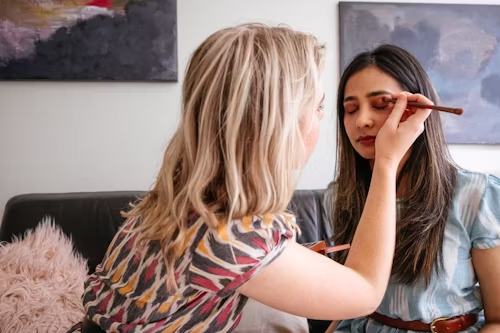
Approach Makeup with Caution
When considering makeup application to conceal acne, it’s essential to approach it cautiously, especially for individuals with susceptible skin. While makeup can effectively hide blemishes, its application might be better for skin-sensitive patients. However, the beauty industry has responded to this concern by offering many products to address acne-prone skin needs. From primers and concealers to foundations, these products often contain salicylic acid, a key ingredient known for its acne-fighting and oil-controlling properties. By opting for these specialized formulations, individuals can enjoy the benefits of makeup while minimizing the risk of exacerbating their skin concerns.
For those who prefer to avoid investing in specialized skincare products, it’s imperative to scrutinize the ingredients in makeup formulations. Avoiding oil-based or comedogenic products is essential, as they have the potential to clog pores and worsen existing skin issues. Regardless of the choice of makeup, proper cleansing rituals are paramount. Thoroughly removing makeup before bedtime ensures the elimination of pore-clogging residues, while regular cleaning and sanitizing of makeup and applicators help prevent the accumulation of acne-causing bacteria. By adhering to these practices, individuals can effectively conceal acne and maintain healthier and clearer skin in the long run.
Consider Blue Light Therapy
Blue light therapy emerges as a promising option for addressing acne, albeit being one of the pricier alternatives. Despite its cost, it’s a notable method worth considering for acne treatment. Many at-home devices offering red and blue light therapy are available today. These devices utilize red light to help alleviate inflammation, while blue light targets explicitly and combats the acne-causing bacteria that often reside on our skin’s surface.
Investing in an at-home blue light therapy device provides the convenience of accessing professional-grade treatment from the comfort of your home. By integrating this technology into your skincare regimen, you can effectively tackle acne concerns while minimizing the need for costly dermatologist visits or prescription medications. With consistent use, blue light therapy offers a noninvasive and gentle approach to achieving more transparent skin and enhancing skin health, rendering it a valuable inclusion to your acne-fighting arsenal.
Relieve Pain with Ice and Heat
When facing the discomfort of a pimple, addressing the pain can be just as crucial as treating the blemish itself. Ice can be a quick remedy to calm inflammation and ease the throbbing sensation associated with pimples. However, dermatologist Dr. Khetarpal advises that this relief is temporary and may dissipate quickly. Similarly, applying a warm washcloth to the affected area can provide temporary soothing for irritated skin, though it doesn’t directly target the underlying pimple.
While ice and heat offer immediate comfort, they are not standalone solutions for treating pimples. Dr. Khetarpal underscores the importance of incorporating medication for effective pimple eradication. Examples include topical creams or spot treatments, complementing these temporary measures with appropriate acne treatments. Individuals can address the root cause of the pimple and achieve long-term relief from breakouts, promoting clearer and healthier skin.
Opt for Cortisone or Antibiotic Injection
In pivotal moments like your wedding day, prom night, or high school reunion, the last thing you want is to contend with a prominent blemish. While the methods mentioned earlier can help mitigate the appearance of pimples, there are instances where you need a more immediate and drastic solution. In such cases, requesting a cortisone or antibiotic injection from your dermatologist can be a game-changer. Although there’s no guarantee of immediate availability for such appointments, it’s worthwhile to inquire about this option. These injections can work wonders in quickly reducing the size and inflammation of the blemish, often yielding visible improvements within 24 hours.
Opting for a cortisone or antibiotic injection proactively addresses urgent skincare concerns, especially during significant events or milestones. By seeking this specialized treatment, you can gain confidence knowing that your complexion will be clear and radiant when it matters most. While exploring other skincare remedies for long-term prevention is essential, the rapid results provided by these injections offer a reliable solution for immediate blemish management, ensuring you look and feel your best during your most memorable occasions.
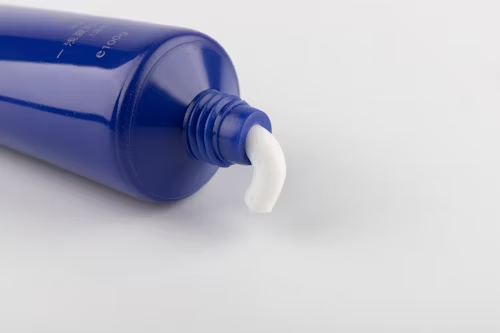
Things to Avoid:
-
Don’t put toothpaste on your pimple:
While toothpaste may contain ingredients like alcohol or baking soda that could dry out a pimple, it also includes other components not intended for facial use. Dr. Khetarpal warns that applying toothpaste to a pimple may potentially irritate the skin.
-
Don’t put crushed-up aspirin on your pimple:
Some individuals advocate for crushing aspirin and mixing it with water to apply to a pimple. However, while aspirin contains acetylsalicylic acid, similar to salicylic acid, its efficacy in treating acne is not well-supported by clinical evidence. Many dermatologists find that it may dry out the skin without providing significant benefits.
-
Please don’t use harsh astringents:
Although harsh astringents like alcohol or witch hazel may seem appealing for drying out acne-prone skin, they can exacerbate irritation and worsen acne. Instead, opt for a soothing toner to maintain skin balance.
-
Avoid these ‘home remedies’:
Several purported home remedies for acne found on the internet can harm the skin. These include apple cider vinegar, hydrogen peroxide, lemon juice, glass cleaner, rubbing alcohol, and honey. It’s best to avoid these remedies and seek guidance from a dermatologist for safe and effective treatment alternatives.
Is it advisable to attempt popping it or not?
When faced with a pimple, the temptation to pop it may be strong, especially with the prevalence of pimple-popping videos on the internet. However, dermatologist Dr. Khetarpal advises against succumbing to this urge in real life. Manipulating a pimple can exacerbate inflammation, increasing the risk of scarring. Additionally, the hands harbor dirt and bacteria, which can be transferred to the skin during popping, potentially worsening the condition. Instead, Dr. Khetarpal recommends spot-treating the pimple with benzoyl peroxide and refraining from further manipulation. While covering the blemish with makeup is acceptable, poking, picking, or squeezing it should be avoided to allow it to heal naturally.
Conclusion:
We’ve all experienced a blow to our confidence at some point, courtesy of a sudden breakout. Dealing with pimples can be a hassle, but practical solutions are available. One of the quickest ways to tackle a pimple is by using a benzoyl peroxide spot treatment. Additionally, you can use various strategies to expedite the healing process, such as applying ice or heat to the affected area, incorporating salicylic acne cleansers into your skincare routine, exploring blue light therapy, or considering cortisone injections.
However, it’s crucial to refrain from popping your pimples because it can result in additional inflammation and scarring. Moreover, it’s advisable to exercise caution when exploring home remedies found on the internet, as they may do more harm than good.



